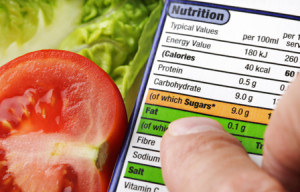Learn more about healthy eating by participating in the one-on-one Nutritional Counseling program at Riverview Health.
 Fat is often considered a taboo word when it comes to nutrition and healthy eating. Studies about the nutritional benefits and disadvantages of different types of fat are constantly evolving as scientists perform more research. However, it’s widely believed the right type of fat plays a part in fighting fatigue, controlling your weight, improving your cholesterol, managing your moods and being mentally healthy. So, how do you know which types of fat are good for you and what you should eat?
Fat is often considered a taboo word when it comes to nutrition and healthy eating. Studies about the nutritional benefits and disadvantages of different types of fat are constantly evolving as scientists perform more research. However, it’s widely believed the right type of fat plays a part in fighting fatigue, controlling your weight, improving your cholesterol, managing your moods and being mentally healthy. So, how do you know which types of fat are good for you and what you should eat?
The Good
Good fats are responsible for improving your total cholesterol as well as providing some other health benefits. These fats mostly appear liquid at room temperature.
- Monounsaturated fats lower your LDL (bad) cholesterol while helping increase your HDL (good) cholesterol. Food sources include several oils such as olive, sunflower, peanut, canola and sesame, as well as avocados, olives, peanut butter and nuts.
- Polyunsaturated fats help lower triglycerides and fight inflammation. Omega-3 fatty acids are a type of polyunsaturated fat and an essential fatty acid—meaning the body needs them to function but cannot make them so they must be obtained through foods. They can help with depression, memory loss or dementia, as well as reduce the risk of heart disease, stroke and cancer. They can also help with arthritis, joint pain and inflammatory skin conditions. Food sources include oils such as corn, safflower and soybean, as well as walnuts, flaxseed, soymilk, tofu, algae, seeds and fatty fish (e.g., mackerel, salmon, tuna, herring, trout, sardines). Omega-3 fatty acids can also be obtained through fish oil supplements.
The Bad
Saturated fats may raise your cholesterol and are mainly found in animal products. They’re mainly solid at room temperature. Foods containing saturated fats that you should cut back on include high-fat meats, chicken with the skin on, whole-fat dairy products, butter, cheese, ice cream, palm and coconut oil, and lard.
The Ugly
Trans fats are the worst type of fat and should be avoided at all costs. These are also solid at room temperature. Trans fats can lower your HDL (good) cholesterol and raise your LDL (bad) cholesterol. These can be responsible for all sorts of health problems—everything from heart disease to cancer. Foods to avoid include commercially baked goods, packaged snack foods (e.g., crackers, chips, popcorn), stick margarine, vegetable shortening, fried foods and candy bars.
So, in short, don’t cut out fat—just replace bad fats with good fats to promote health and well-being.
Learn more about healthy eating by participating in the one-on-one Nutritional Counseling program at Riverview Health.
